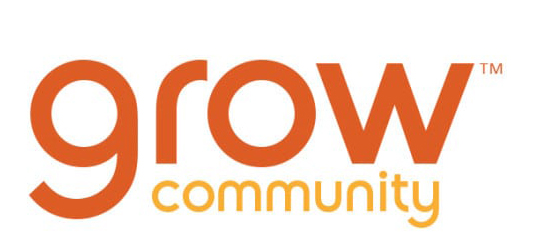 Our neighbor, the Peacock Family Center has given us permission to repost a Thanksgiving message written by one of their teachers. Peacock provides family support and services for the greater Bainbridge Community. When we read this post in their monthly newsletter, we were struck by the wonderful reminder of gratitude. So often in our busy lives we forget to stop and simply be grateful for the many gifts that we experience every day. We share this gift with you in hopes that you too will find the time to pause and reflect on friendship, community and the simple things that add joy to your life every day.
Our neighbor, the Peacock Family Center has given us permission to repost a Thanksgiving message written by one of their teachers. Peacock provides family support and services for the greater Bainbridge Community. When we read this post in their monthly newsletter, we were struck by the wonderful reminder of gratitude. So often in our busy lives we forget to stop and simply be grateful for the many gifts that we experience every day. We share this gift with you in hopes that you too will find the time to pause and reflect on friendship, community and the simple things that add joy to your life every day.
Happy Thanksgiving, from the Grow Team!
 November can be a time for quiet introspection in the form of gratitude and thankfulness, a time to look at what is around us and really appreciate the bountifulness of our lives and those whom we love. We all impact each other each and every day, and it is a good time of the year to reflect on this, and the gratitude that we have towards what is so fortunate in our lives.
November can be a time for quiet introspection in the form of gratitude and thankfulness, a time to look at what is around us and really appreciate the bountifulness of our lives and those whom we love. We all impact each other each and every day, and it is a good time of the year to reflect on this, and the gratitude that we have towards what is so fortunate in our lives.
At Peacock, we are always mindful of how we are thankful towards each other. It is a place of giving and nurturing and appreciating each other for this, a love that is ever-present from day to day. We add this piece to the holiday of Thanksgiving, and the result is a celebration of this sense of gratitude, for celebrations are necessary in our lives, marking milestones and happy occasions. It is good to step back from the stress that can sometimes filter into our lives in order to appreciate life’s simple gifts as we pause for a moment and give thanks to those around us who have shown us love and care. It is a universal celebration of gratitude.

Yet, one must also be mindful that Thanksgiving, while it is widely celebrated by many in the United States and Canada, including by new immigrants, it is not a holiday that is embraced by all. The story and traditions of Thanksgiving reflect the perspective of the European colonists, not the indigenous people who had already been living on the continent for many thousands of years. While Thanksgiving honors the struggle of a group who immigrated in search of a better life and religious freedom, it does not recognize what the cost was to the Native Americans they displaced.
So, how do you “celebrate” Thanksgiving in a mindful way, and how do you introduce young children to concepts of Thanksgiving without instilling prejudicial attitudes? I like to look at it as a moment in history when two groups of people who didn’t know each other sat down and shared food they had prepared. In sharing there is a peaceful quality, a way to bridge a gap between people who don’t know each other very well. I like to talk of the Native Americans in a contemporary, non-stereotypical way, and I like to talk of the Pilgrims as newcomers who needed to learn the ways of the people who had lived there for years and years and years, people who knew important things that the Pilgrims needed to learn in order to live here. Young children can relate to the kindness one shares with people they do not know, and how to learn about how to get along in a respectful framework.
 So, in 1621, when these so-called pilgrims sat down at the table with the Wampanoag at Plymouth Colony, very important things happened besides just eating. It was the background for cultural exchange, for friendship building that crossed over differences, a vital concept that we are still working on in our culture to this day.
So, in 1621, when these so-called pilgrims sat down at the table with the Wampanoag at Plymouth Colony, very important things happened besides just eating. It was the background for cultural exchange, for friendship building that crossed over differences, a vital concept that we are still working on in our culture to this day.
Edward Winslow, an English leader who attended this feast in 1621 wrote a letter home to a friend describing this first Thanksgiving: “Our harvest being gotten in, our governor sent four men on fowling, that so we might after a special manner rejoice together after we had gathered the fruit of our labors. They four in one day killed as much fowl as, with the help beside, served the company almost a week. At which time..many of the Indians coming amongst us, and among the rest their greatest king Massasoit, with some ninety men, whom for three days we entertained and feasted, and they went out and killed five deer, which they brought to the plantation and bestowed on our governor, and upon the captain and others.”
Besides venison, what did they eat on that First Thanksgiving? Wild turkeys, Indian corn, goose and duck, eels and shellfish, chestnuts, walnuts, and beechnuts, beans, all kinds of squash and pumpkins, and all kinds of root vegetables. In short, for three days they feasted on food that they had harvested and hunted and carefully prepared, food that would connect two cultures and would create friendships.

Heidi Harrison, Program Supervisor. Heidi works in all of the classrooms at the Peacock Family Center, mentoring, assisting and guiding teachers in their work, supporting families, designing curriculum and arranging for field trips and community immersion. With a passion for teaching of the highest quality, a bright laugh and smile and a depth of knowledge of all things developmental, Heidi happily leads our teachers and children on their growth path.

It Takes A Village: Cultivating Community Through Collaboration
/in Activist Development, Building The Future, Design, Food & Local Economy, Form & Function, Grow News, News, News at Grow, Our Island Community /by Grow TeamWe’d like you to meet Scott McGowan, One Planet Champion for our 7th One Planet Principle, Local and Sustainable Food. We asked him why he got involved with Grow and to share his thoughts on the One Planet program. Here is his response.
The network of community gardens will create a better place for the residents by (1) reducing the amount of trips they need to take to the grocery store, 2) eating and living healthier lifestyles 3) building strong friendships and community 4) donating fresh foods to local food banks 5) educating residents and the broader Bainbridge community about growing food and building sustainable community through modeling and 6) providing fun community events in the beautiful outdoor garden spaces.
The shared goal for Grow is to provide an important educational opportunity for children and creating future advocates for community gardens.
A few weeks ago Scott engaged local elementary students from Madrona School in the first harvest of our welcome garden. The effort was part of an educational program in local and organic foods. The kids harvested, learnt to cook with some of the vegetables, and provided some to the local food kitchen at Helpline House on Bainbridge.
For more about Scott’s organization Alleycat Acres, click here.
Happy Thanksgiving!
/in Food & Local Economy, Grow News, News, News at Grow, Our Island Community /by Grow TeamHappy Thanksgiving, from the Grow Team!
At Peacock, we are always mindful of how we are thankful towards each other. It is a place of giving and nurturing and appreciating each other for this, a love that is ever-present from day to day. We add this piece to the holiday of Thanksgiving, and the result is a celebration of this sense of gratitude, for celebrations are necessary in our lives, marking milestones and happy occasions. It is good to step back from the stress that can sometimes filter into our lives in order to appreciate life’s simple gifts as we pause for a moment and give thanks to those around us who have shown us love and care. It is a universal celebration of gratitude.
Yet, one must also be mindful that Thanksgiving, while it is widely celebrated by many in the United States and Canada, including by new immigrants, it is not a holiday that is embraced by all. The story and traditions of Thanksgiving reflect the perspective of the European colonists, not the indigenous people who had already been living on the continent for many thousands of years. While Thanksgiving honors the struggle of a group who immigrated in search of a better life and religious freedom, it does not recognize what the cost was to the Native Americans they displaced.
So, how do you “celebrate” Thanksgiving in a mindful way, and how do you introduce young children to concepts of Thanksgiving without instilling prejudicial attitudes? I like to look at it as a moment in history when two groups of people who didn’t know each other sat down and shared food they had prepared. In sharing there is a peaceful quality, a way to bridge a gap between people who don’t know each other very well. I like to talk of the Native Americans in a contemporary, non-stereotypical way, and I like to talk of the Pilgrims as newcomers who needed to learn the ways of the people who had lived there for years and years and years, people who knew important things that the Pilgrims needed to learn in order to live here. Young children can relate to the kindness one shares with people they do not know, and how to learn about how to get along in a respectful framework.
Edward Winslow, an English leader who attended this feast in 1621 wrote a letter home to a friend describing this first Thanksgiving: “Our harvest being gotten in, our governor sent four men on fowling, that so we might after a special manner rejoice together after we had gathered the fruit of our labors. They four in one day killed as much fowl as, with the help beside, served the company almost a week. At which time..many of the Indians coming amongst us, and among the rest their greatest king Massasoit, with some ninety men, whom for three days we entertained and feasted, and they went out and killed five deer, which they brought to the plantation and bestowed on our governor, and upon the captain and others.”
Besides venison, what did they eat on that First Thanksgiving? Wild turkeys, Indian corn, goose and duck, eels and shellfish, chestnuts, walnuts, and beechnuts, beans, all kinds of squash and pumpkins, and all kinds of root vegetables. In short, for three days they feasted on food that they had harvested and hunted and carefully prepared, food that would connect two cultures and would create friendships.
Heidi Harrison, Program Supervisor. Heidi works in all of the classrooms at the Peacock Family Center, mentoring, assisting and guiding teachers in their work, supporting families, designing curriculum and arranging for field trips and community immersion. With a passion for teaching of the highest quality, a bright laugh and smile and a depth of knowledge of all things developmental, Heidi happily leads our teachers and children on their growth path.
5 Minute Lifestyle; 5 Minute Neighborhood for Kids
/in 5 Minute Lifestyle, Food & Local Economy, For Kids, Grow News, News, News at Grow, Our Island Community, Quality of life /by Grow TeamBy our Health and Happiness Champion, Leslie Schneider
How did you feel about your neighborhood as a kid?
Before I was even 11 years old I could walk on my own to the library, or to a couple of stores in my neighborhood to spend my dimes and quarters. When I visited my grandparents in the summer, my cousins and I would walk to the public swimming pool or a community center for day camp classes. These memories define my childhood because I was not dependent on adults driving me there. My world had a connected set of places that I could “own.”
In the 5-minute lifestyle of the One Planet Grow Community, our homes are walking and biking distance from many family-friendly destinations, and they become such a part of our lives that we don’t even have to plan for them. The Grow Community on Bainbridge Island offers so many activities that will live in our kids’ memories as part of where we live.
Here are a few favorites that are great for a range of ages:
The Farmers Market in Winslow
For almost half the year, the Saturday Farmer’s Market in Town Square is just a block away. Kids experience the color and bounty of fresh local food, the energy of the music, and even a marketplace where kids are the artisans and vendors. Keep walking through the market, and just around the performing arts center is the Bainbridge Island Historical Museum, with fresh displays as well as the longstanding history exhibits. Come home by way of Winslow with occasional visits to the Curious Child for the latest instructional games and toys, and you’ve got a weekly tradition that will live on for years in your kids’ memories.
On any day, a five minute stroll on friendly sidewalks through Winslow gets you and your kids to the playground behind the Town & Country grocery. From there, another 5 minutes on trails through Waterfront Park opens up to the beach. Low tide under the ferry dock is an unbelievable zoo of anemones, at least seven different species of sea stars, and frequent startling spurts from buried clams. A few times each season there are beach naturalists to help identify your finds. Bring rubber boots or water shoes, and don’t forget to buy the makings for dinner at Town & Country (grocery store) on your way back.
Kayaking on the Sound
For the days when weather discourages extended outdoor time, the Bainbridge library is just a five minute walk up the street, and another five minutes lands you at the Aquatics Center for swim lessons or free play in the lazy river or down the 20′ water slide. Diagonally across High School Road from the library and behind the Commodore Options school is the Bainbridge High School Gymnastics Room that hosts many Parks and Recreation classes, including the urban gymnastics for older kids called Parkour (it’s much safer than jumping between tall buildings).
Five minutes on bikes (or 10 minutes by foot at an adult pace) and you’ll be at the ferry for an excursion to Seattle (and you can lock the bikes in the protected Bike Barn). Or stay on the island for an adventure at the Kids
Biking around the island
Discovery Museum across the street. “KiDiMu”, as it is mostly called, has built a strong following in its new location in Island Gateway, and soon the Bainbridge Art Museum will be another destination in that same campus. On
that same route, kids probably won’t love their appointment at the Virginia Mason clinic, but stop at Mora’s ice cream on your way back and all will be forgiven. In the car-dependent life, we weigh the benefits of a great destination with the costs of our own energy and time getting kids buckled in, travel and traffic, and finally finding parking in the vicinity of the destination. Then there are the real costs of gas and parking and maintenance, but we don’t usually track these carefully, willing to accept an average monthly budget for such necessities. In a car-free 5-minute lifestyle, instead of a hassle, getting there is half the fun!
If you’d like to learn more about the 5 Minute Lifestyle, check out our blog on Sustainable Transportation
Fun at the KiDiMu
Leslie Schneider is a marketing and communications specialist with a history of building community. Leslie has worked with both start-ups and software giants offering messaging, marketing collateral, and training development. She is also a founding member and ‘graduate’ of cohousing, having developed and then lived in Jackson Place Cohousing (near downtown Seattle) for eight years. She served on the cohousing development LLC managing board for five years and was the owner’s representative for the 27-unit condominium construction. You can find her at Office Xpats, a co-working and conference center based on Bainbridge Island.
Sustainable Seattle’s 2012 Sustainability Leadership Awards Dinner
/in Events, Grow News, News, News at Grow /by Grow TeamNovember 15th 2012, 6-9pm
Grow Drinks – Seattle
/in Events, Grow News, News, News at Grow /by Grow TeamNovember 7th 2012, 7-9pm
Grow Solar Part 3: Incentives for Solar
/in Building The Future, Carbon Free, Energy, Grow News, News, News at Grow, The Homes /by Grow TeamClick here for Part 2 of our Grow Solar Series, where we talk about the energy efficiency measures we’ve taken to make solar power feasible in each home.
When we set out to build Grow Community, we committed to creating a One Planet community that would allow its residents to live a zero carbon lifestyle without spending extra money or compromising the comforts or quality of life that they desired. We set an immense challenge for our team: to design and build zero-carbon houses that could sell for less than or equal to market price. Our incredible team met that challenge and exceeded our expectations, not only designing zero-carbon, solar powered homes that met our price requirements, but creating homes that are incredibly comfortable and pleasant to live in. The homes are amazing spaces to be in. Seriously. If you haven’t been to the models homes for a tour, check it out. We think you’ll agree.
The idea of tax credits and incentives for the solar package may at first seem complex, but really it is quite simple. The incentives available for renewable energy can be broken down into 3 major parts:
1. The most notable of these incentives is a 30% tax credit provided by the federal government to anyone installing renewable energy (Solar, wind, geothermal, etc.) at their place of residence. As an example, say you purchase a $40,000 solar package. In the first tax cycle after your purchase, you will receive a tax credit (actual cash – not a deduction) of approximately $12,000.
Here is some additional information from EnergyStar on this tax credit.
3. Last, but not least, Puget Sound Energy has a net-metering program where residential homes that use renewable energy can actually provide electricity back to the power grid. Based on typical modeled energy use, by sizing our solar for each home at Grow, and expecting average weather, each resident can end up producing as much as they use. The result? Your averaged annual energy bill – Zero. With potentially rising energy costs over time, the ability to live in a home and not pay for energy has a significant positive impact on annual cost of living – no small consideration.
We think it’s a no-brainer, but we are interested to know what you think. Does it make sense? Do you have questions?
Click here for more information on Washington State solar production incentives.
Stay tuned for Grow Solar Part 4: Financing and Paying off Your Solar Panels.
Jonathan Davis Speaks at ‘Green Homes Event’
/in Events, Grow News, News, News at Grow /by Grow TeamGrow Community In The News: EarthTechling
/in Grow News, News, News at Grow /by Grow TeamBainbridge Island’s Net Zero Community Homes Open For Tours
By Susan DeFreitas
Sick of the traffic in Seattle, and dreaming of the low-impact, car-free lifestyle? Serious about growing food, but lacking in large-scale farming ambitions? Consider a tour of one of new model homes that have recently opened their doors in Grow Community, a new net-zero energy development on Bainbridge Island centered around gardening and low-impact modes of transportation.
This collection of new, net-zero energy homes — located just a 35-minute ferry-ride across the Puget Sound from Seattle — was designed by Jonathan Davis of Davis Studio Architecture + Design and is currently under development. To give prospective residents a glimpse of what life in this eight-acre “pedestrian-oriented, energy-efficient, multigenerational neighborhood” might look like, the community has opened up its first three green prefabricated model homes, which are now open for tours.
(See Full Article Here)
Pumpkin Carving with Peacock Pre-schoolers
/in Events, Grow News, News, News at Grow /by Grow TeamMonday, October 22nd 2012, 10am